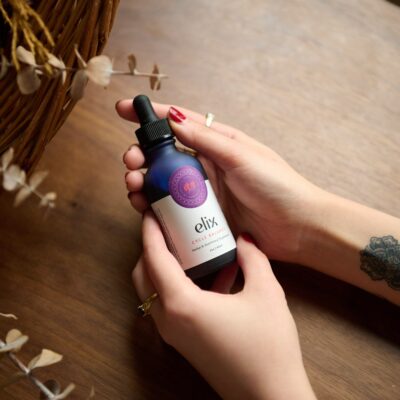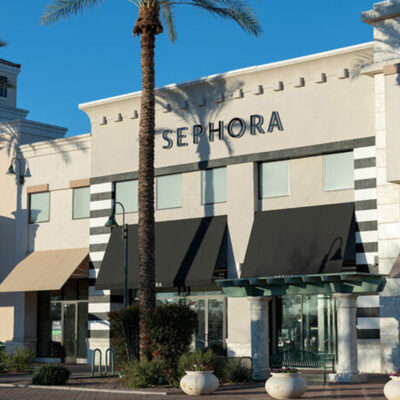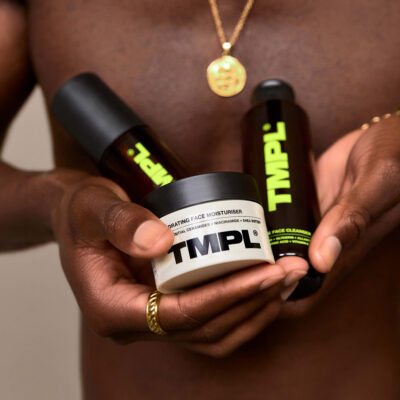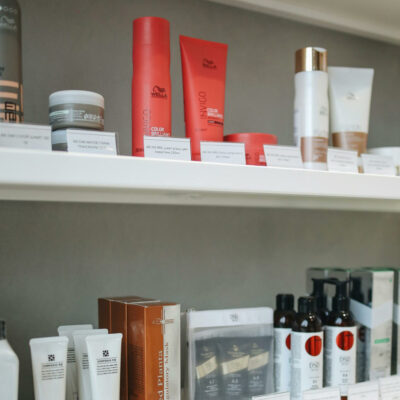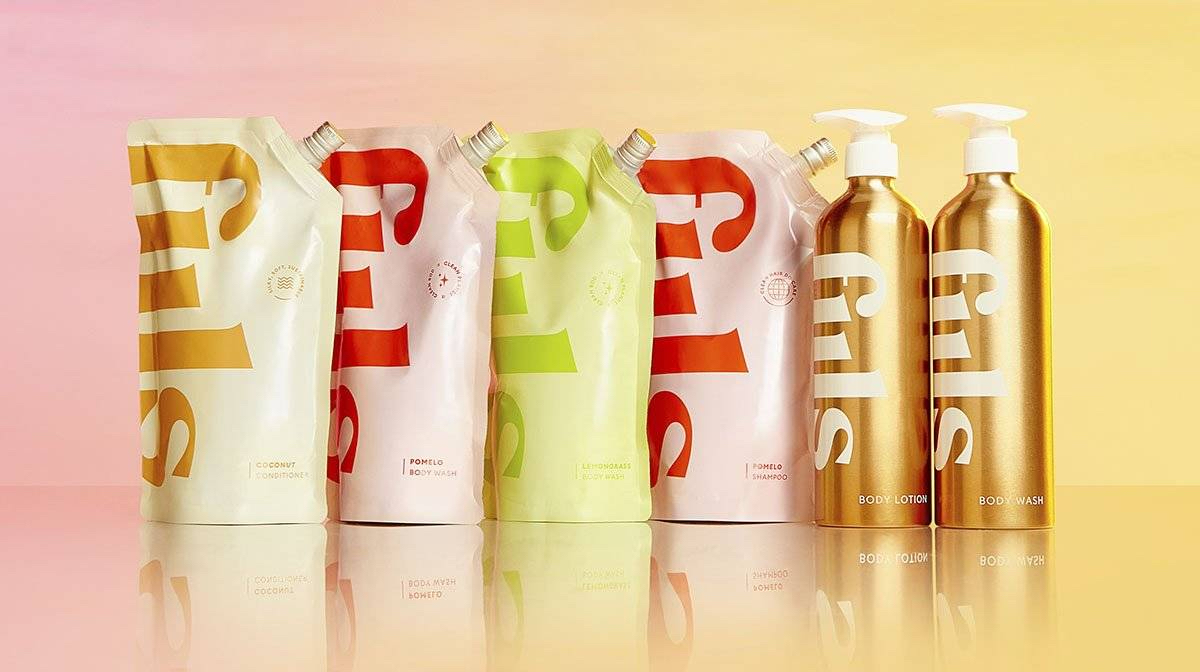
Anna Priadka Closed Refillable Beauty Brand Fiils Last Year. Here’s What She Would’ve Done Differently If She Could.
On Oct. 19, Anna Priadka, founder of Fiils, sent an email to the refillable haircare and personal care brand’s customers explaining its closure. “Unfortunately, we’ve had to face the reality that we can’t make it work,” the e-mail read. “It’s sad news, but we’re proud of all we’ve accomplished.”
Praidka, global artist for Nars in the United Kingdom and regional makeup artist for Dior before launching Fiils as The Conscious Beauty Co. in 2020, doesn’t walk away from Fiils disheartened about the state of sustainable beauty, although she does believe Fiils’ mid-tier pricing—its shampoo was 12 pounds or about $15 at the current exchange rate—wasn’t a great proposition today, and higher end or lower end sustainable products are better suited to the contemporary economy and consumer preferences.
“There are definitely still openings in the market for refillable brands,” says Priadka. “We identified that there was a market for a refillable brand that was cost effective and that provided fantastic formulations at the lower end. I do think there’s still nothing in the market that provides beauty essentials at affordable prices.”
Despite her belief in market openings, due to the reality Priadka faced running Fiils, which ran out of money short of profitability, she doesn’t discount the hurdles entrepreneurial brands have to surmount to be successful. “As a founder, it’s always important to have a glass half-full approach, and that’s definitely a strength of mine,” she says. “Naturally, I always see the opportunity for growth, but I do think that we can be a bit too optimistic sometimes, and I think it’s important to be realistic about the prospects.”
Below, Priadka, who’s moving on to a venture assisting businesses with reducing plastic, shares 11 lessons she learned at Fiils and what she would change at the brand based on those lessons if she could rewind the clock.
1. Experience at a large company doesn’t necessarily tee you up to win as an entrepreneur.
Preceding Fiils, Priadka founded a disco-inspired vegan makeup brand called Makeup 54. That gave her a better understanding of being an entrepreneur than her positions prior to it. “Coming from a big beauty background, it actually sets you up quite badly for a career in entrepreneurship because you’re used to working with these big budgets,” says Priadka. “You are used to having all the resources you need and then to apply that mindset immediately into a startup is a challenge.”
2. You’re going to need more money than you think to build a brand.
“It’s so easy to launch a product, but to actually keep an indie brand alive now, the amount of money that you need to stand out in a crowded market is ridiculous,” says Priadka. She put 20,000 pounds or about $25,000 from her personal savings into Fiils. Outside of her personal savings, she raised roughly 600,000 pounds or about $761,000 from angel investors throughout the brand’s lifetime, but estimates it needed a minimum of 400,000 pounds or about $507,000 more to get to product-market fit. Priadka says, “It would’ve been a million [pounds or nearly $1.3 million overall] that we would’ve needed to raise, and I think genuinely that is what you need to launch a beauty brand nowadays.”
3. Fundraising is exhausting.
In advance of shuttering Fiils, Priadka reached out to approximately 800 investors in pursuit of the 400,000 pounds she felt she needed to push the brand to profitability and didn’t garner any commitments. “The way I’d raised previously, we’d closed on 600,000 in total, but I’d raised those amounts small tranches. So, I’d raised 200,000, and then I’d take a break because it’s so extremely exhausting raising funds,” says Priadka. “We’d do what we needed to do with that tranche, and then I’d come back to it in maybe six months’ time when we needed some more, but the problem with that is you’re surviving on smaller traches of money, and 200,000 is not a lot of money if you’re not spending it in the right way. When you’re not really seeing the growth that you need to be seeing, it disappears.”

4. Differentiate or die.
“The biggest thing that anyone can do launching a beauty brand now is to make sure you differentiate,” says Priadka. “There are a few ways to do that, looking at the market and seeing what’s out there and how the competitor brands are selling it, and you sell it better than they can. Is there anything that you think is missing from their proposal, the product, the service? The other thing is to pick a category that is a bit boring and innovate in that category. So, for instance, we had shampoos, body washes, conditioners, etc.”
She continues, “If I was to go back, I would’ve focused on innovating a bit more with the reuse and refill system that we had. So, making it a bit more exciting, spending more on the packaging and the initial product just to make sure that we were differentiated enough. I would’ve innovated more with the formulation, maybe came up with a powder-to-liquid formulation or something like that to really cut through. If you are going to launch a beauty brand, because it is such a saturated market where everything has been done, you really need to sit down, think and make sure that the product is spot-on.”
5. Expect to evolve products.
“Once you’ve got the product, and you’ve established a niche, get it out into the market and then quickly learn and reiterate,” suggests Priadka. “Once you’ve got a few customers in the pipeline, speak to those customers, see what they love about the product, see what they don’t like about the products, and figure out how to improve that and figure out what problem is your product solving.”
6. Sustainability alone doesn’t sell.
“We had a lot of issues with our suppliers. We couldn’t find a supplier that could create a formula at a cost that was decent enough to enable us to grow our margins and create a formula that customers loved. Margins were really, really thin with Fiils.
It’s a very personal thing for women, buying a shampoo. Along with sustainability, the product has to be good. Customers are making a better choice for the planet, but the product isn’t as effective as the products that you’re currently using. If you are asking customers to spend 12 pounds on a shampoo with an unknown brand, the formula has to be exceptional, and I think it just didn’t cut it with the formulations for most customers, and we just weren’t able to scale.”
7. Throwing money at marketing doesn’t solve every issue.
Fiils spent some 40% of its funds on marketing. “We were good at gaining customers and converting customers, but where we struggled was keeping customers, and you can throw all the money in the world at marketing and not have great products. Digital marketing, Google search ads have gone through the roof,” says Priadka. “I think we were [spending] sometimes over 30 pounds [or about $38] per conversion. When you think about our average order value is only 26 pounds [or about $33], that customer needs to come back at least two to three times in order for us to make profit on that sale. We spent a lot of money in marketing and threw money at the problem without actually addressing the underlying issue.”
8. Product-market fit should be a leading objective.
Eighteen months before closing Fiils, Priadka hired a consultant to help examine its challenges and conducted a survey of around 600 customers, including loyal customers who shopped repeatedly, customers who shopped occasionally and customers who’d completely abandoned the brand. Following the survey, the brand conducted phone calls with customers.
“Basically, customers shopped with us because we helped them reduce plastic, but also they wanted a nice home. They wanted their bathroom to look nice. There was this sense of having an aesthetically pleasing bathroom by reducing and removing all plastic bottles out the bathroom that look super ugly. We gained a lot of insights into our pricing structure,” says Priadka. “We figured out more in three months than we had in two years.”
She elaborates, “It is normal for brands to not reach product-market fit immediately. Some companies don’t reach it for five, six years, but the process of doing that, you need funds. You need to be able to sustain the business, and we didn’t have the repeat purchase to keep sustaining the business…If I was to go back, I would only spend as much on marketing if I knew the product was ready to scale, if I knew we’d conquered product-market fit.”

9. Don’t expand the assortment too quickly.
Fiils began with six stockkeeping units and doubled that number by its closing. “We expanded categories a lot quicker than we should have,” says Priadka. “We launched three additional bottle colors. We launched into body lotions, more scents across the ranges. It’s really important to stay focused, and you don’t have to launch or expand into so many categories early on, just focus on getting that one category and getting that one product right.
Once you’ve got that right and you’ve got customer traction, you just know. When you’re a founder, if the product is sticky, if customers are coming back for it, you can see the reviews, you can see the response on socials. I knew that we didn’t have that. If I went back, I wouldn’t have expanded into all those categories, which ended up costing us way more money. Every time we had to replenish stock, we had stock across 12 different SKUs that we needed to replenish. Obviously, our payment terms weren’t favorable, so we had to pay 50% upfront, and it was a lot of money coupled with the fact that our formulas were so expensive.”
10. Focus on customer retention rather than customer growth.
Fiils’ sales were regularly growing 10% to 15% per month. “On the surface of it, it looked like we were reporting great numbers of our investors every month, but those customers weren’t sticking around,” says Priadka. “So, we were essentially paying for that one sale, which made that month’s figure great, but then we were potentially losing [customers]. Our repeat purchase rate was about 30%, so 70% of our customers were dropping off.”
With Fiils’ margins and repeat rate, it wouldn’t be profitable until at least 2025. “We were just so focused on growth,” says Priadka. “I think there’s been this toxic mindset right in the startup community with all businesses, and it is growth at all costs, and I think that there’s just so much around grow, grow, grow, grow, grow. That’s all we were focused on.”
11. Make sure you do due diligence on suppliers and pick the best.
Fiils had an experience with an aluminum bottle supplier that Priadka describes as an “absolute disaster.” The brand was selling aluminum bottles as lifetime bottles to be replenished with pouch refills, but they were developing holes in six months, and the supplier of them wasn’t transparent about addressing the poor quality. Priadka says, “Literally the communication was painful, and it caused us damage in the business financially and with a lack of confidence with our customers.”
If she could have a do-over, Priadka would’ve tried to secure the most reliable and highest quality manufacturers as much as she could. She says, “You might knock on the doors of these big manufacturers, and you’ll most likely get a no, but I’d keep knocking. I’d try and work with the best manufacturers. A lot of manufacturers, if they support the idea and if they like you as a founder, if they like the product, they might be willing to negotiate.” Before landing on any supplier, she adds, “You need to do your due diligence and get recommendations from people that have worked with them because, honestly, there are so many bad suppliers.”

